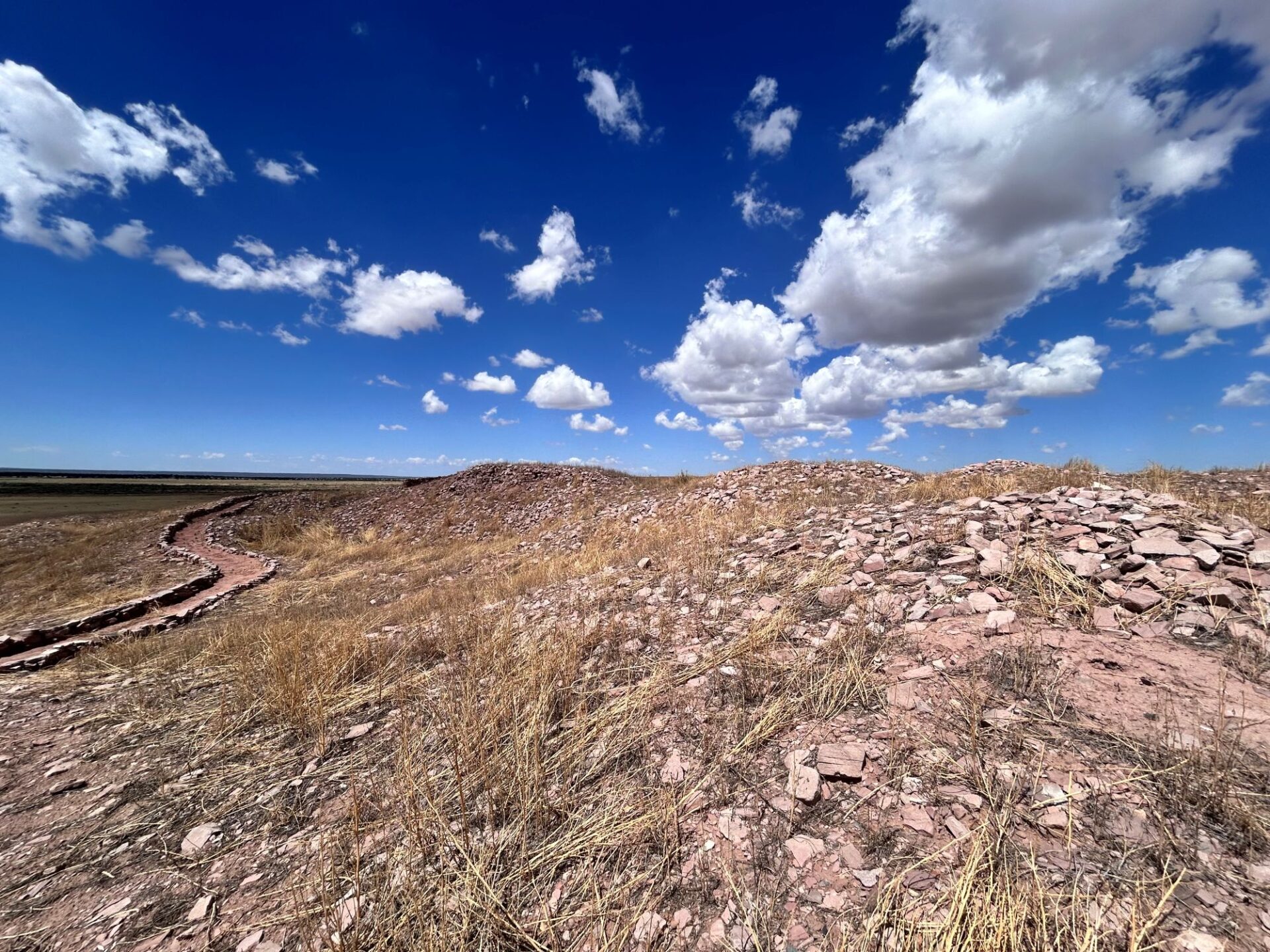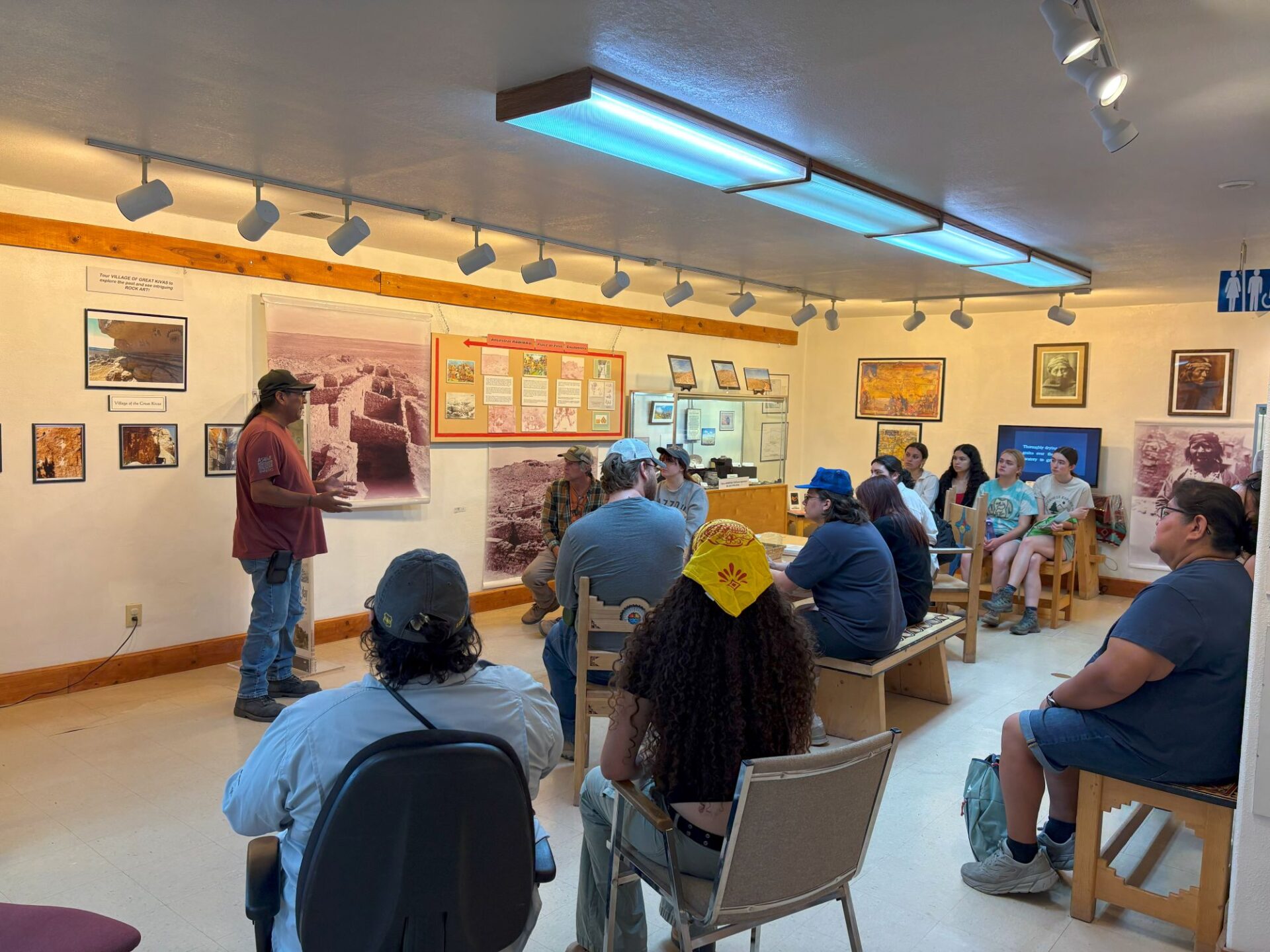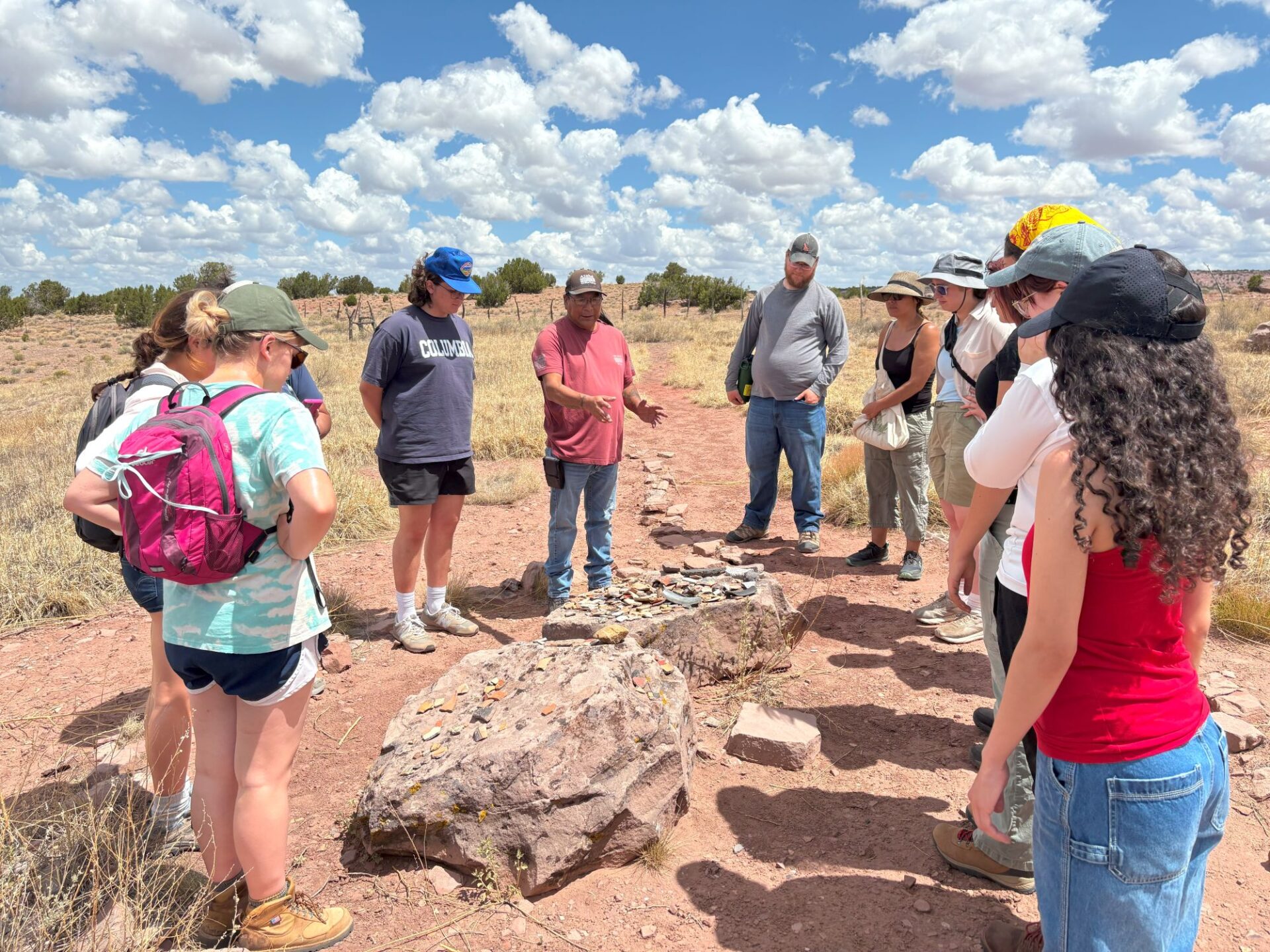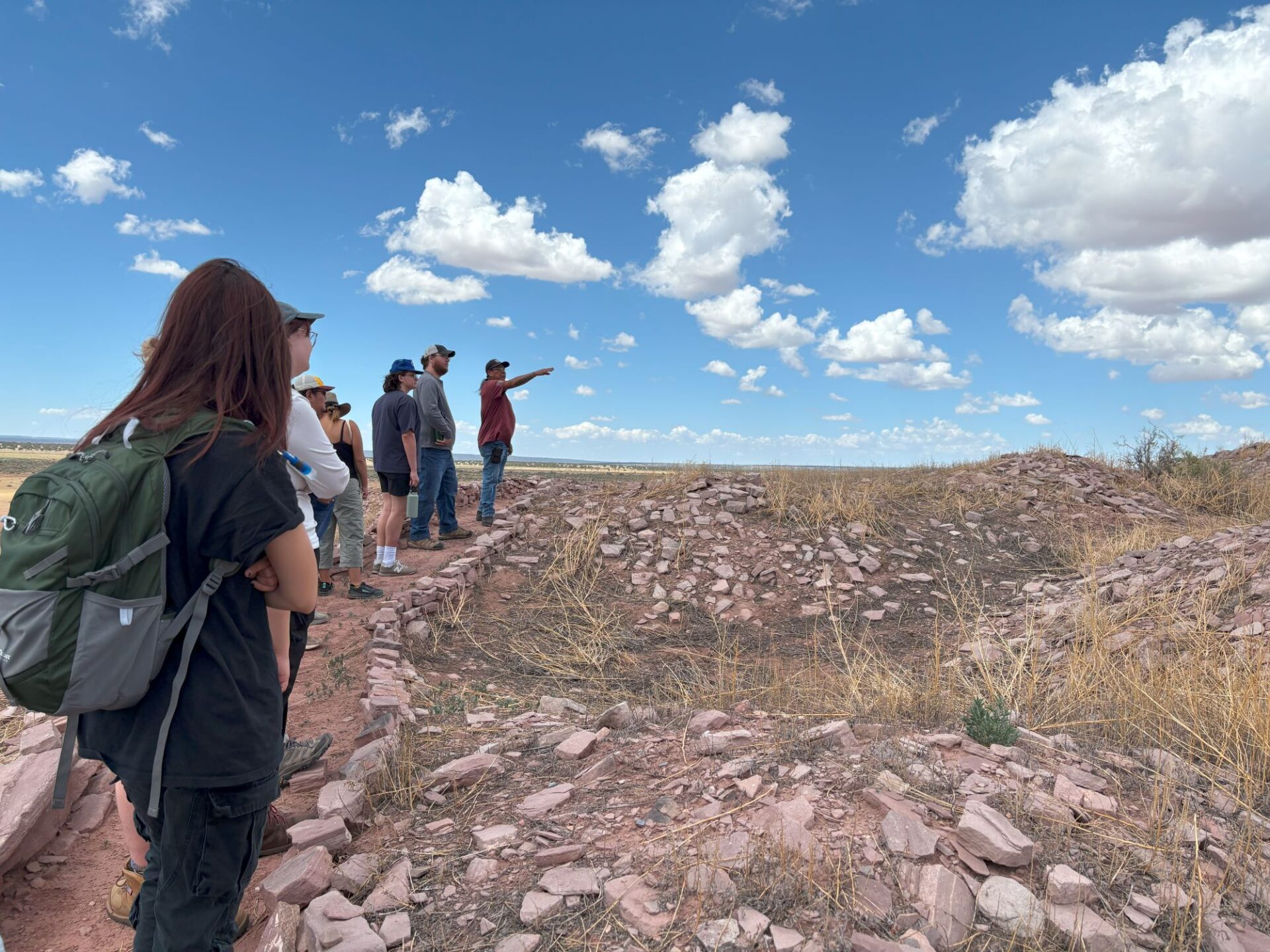- Home
- >
- Preservation Archaeology Blog
- >
- From the Field School: A Visit to Hawikku
(July 30, 2025)—Located within the bounds of the Zuni Reservation near Zuni, New Mexico, Hawikku was one of the largest pueblos inhabited by the Zuni people around the time of the Spanish Entrada. Founded around 1400 CE, it was the first Pueblo to be visited and ultimately subjected to imperialist violence by the Spanish in 1539.

Initially excavated by the Heye Foundation under the direction of Frederick Hodge between 1917 to 1923, all of the material culture and data collected from the site were held by the Museum of the American Indian in New York and then the National Museum of the American Indian in Washington DC. Ultimately, Hodge’s old age and the woes of the Great Depression ceased excavation and research at this site, until relatively recently.
During our visit to Zuni, we had the pleasure of meeting Kenny Bowekaty, a member of the Zuni people, an archaeologist, and the main tour guide for the Zuni Pueblo. Kenny was born and raised just feet from Hawikku; his lineage descends from the Pueblo as well as nearby villages. In his adolescence, he spent much of his time as a shepherd, sitting on top of the impressive Puebloan architecture of Hawikku as he watched his family’s sheep graze upon the grass below.

During Kenny’s fascinating tour of this place, it was incredibly clear how much this Pueblo means to him, his family, and his fellow Zuni people. His unique background as an Indigenous individual dedicated to the traditional culture, knowledge, and heritage of his ancestors, as well as an incredibly skilled and knowledgeable archaeologist and historian, allows him to combine these two perspectives to create a holistic and extensive understanding of the cultural, historical, and scientific importance that Hawikku and the Zuni Pueblo can provide to the landscape of Southwestern archaeology. His passion and dedication to researching his family and community heritage was incredibly inspiring.

Kenny helped me see how impactful Indigenous and community archaeology can be to descendent communities, as it can allow for a unique perspective to be gleaned by Tribal members and outside visitors who are interested in learning about the culture, history, and heritage of the area.

Explore the News
-
Join Today
Keep up with the latest discoveries in southwestern archaeology. Join today, and receive Archaeology Southwest Magazine, among other member benefits.